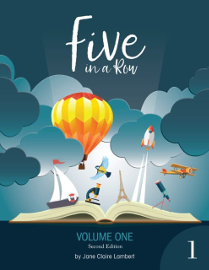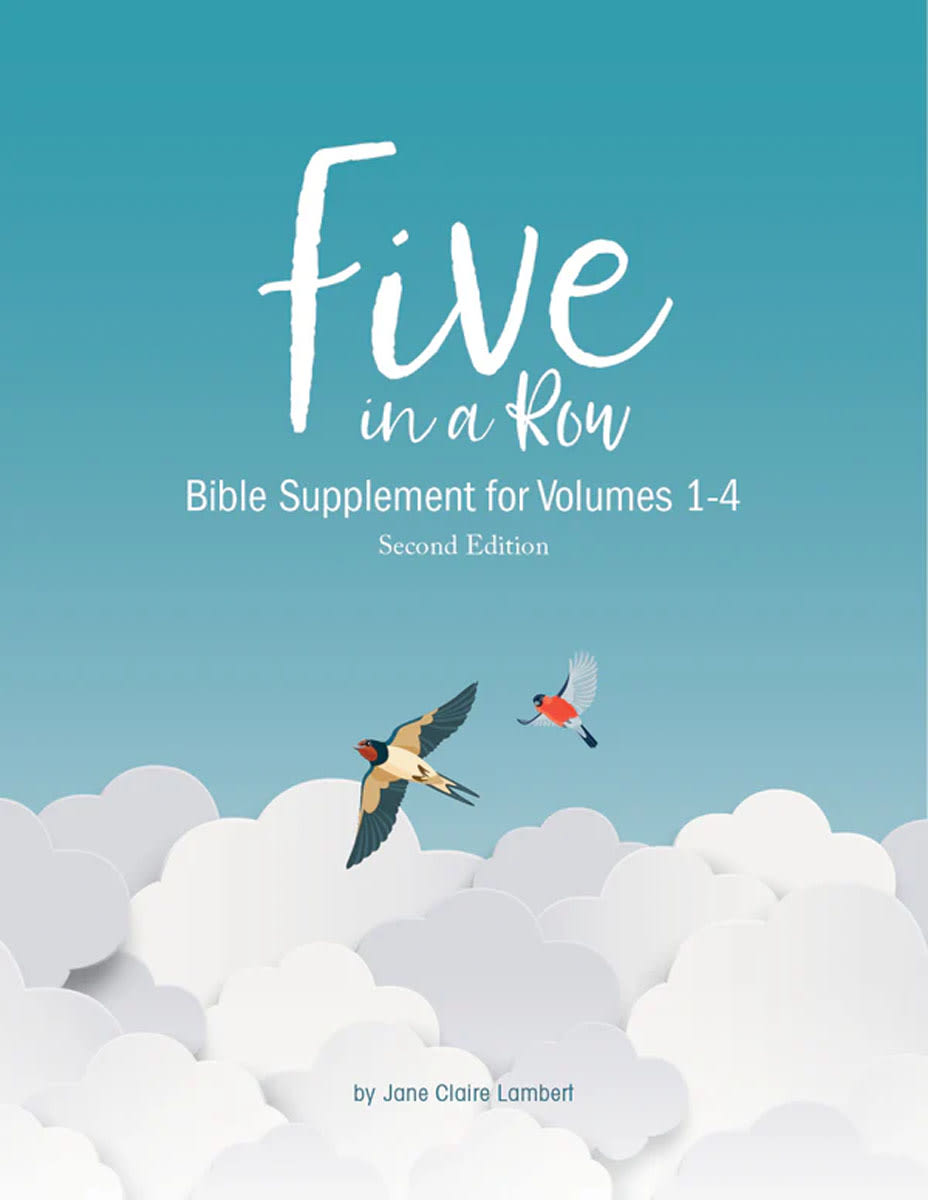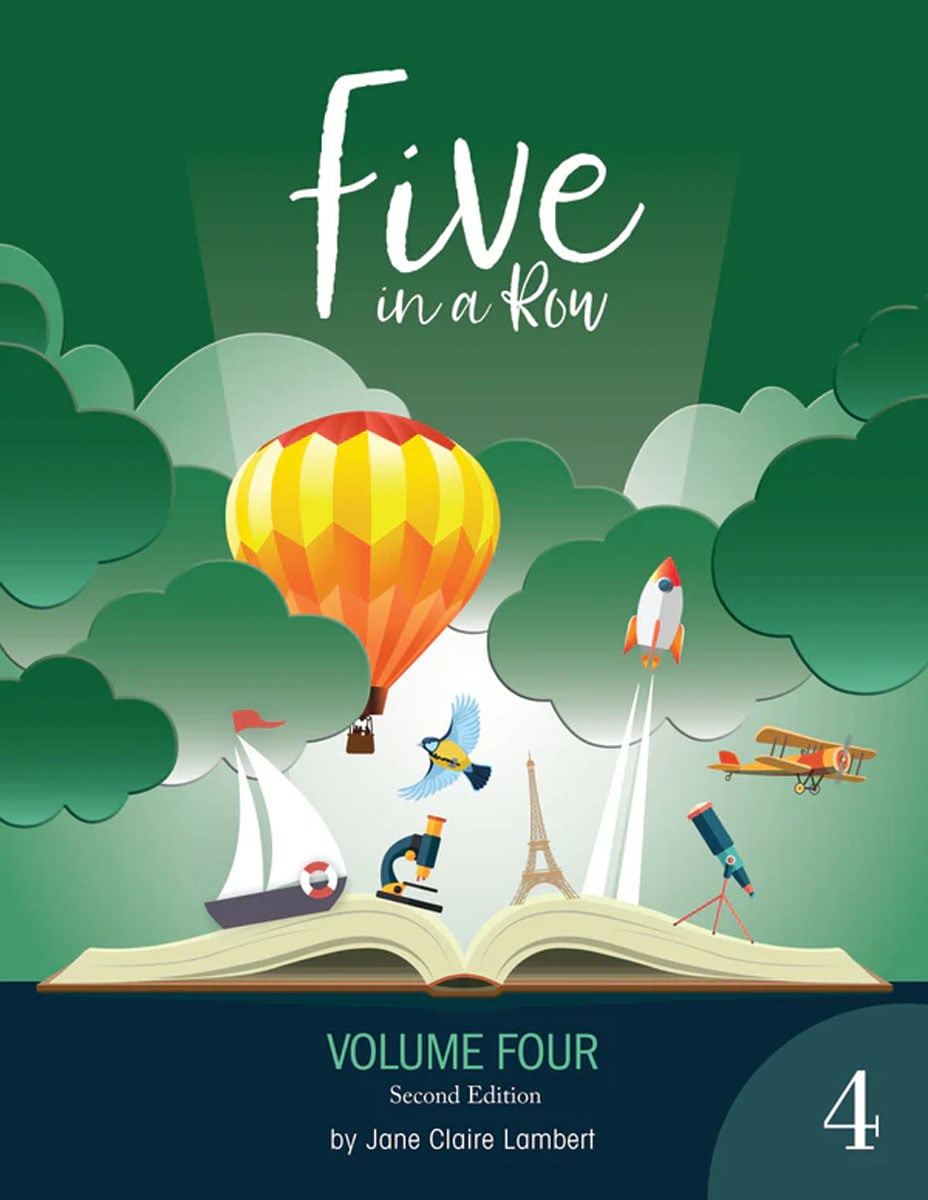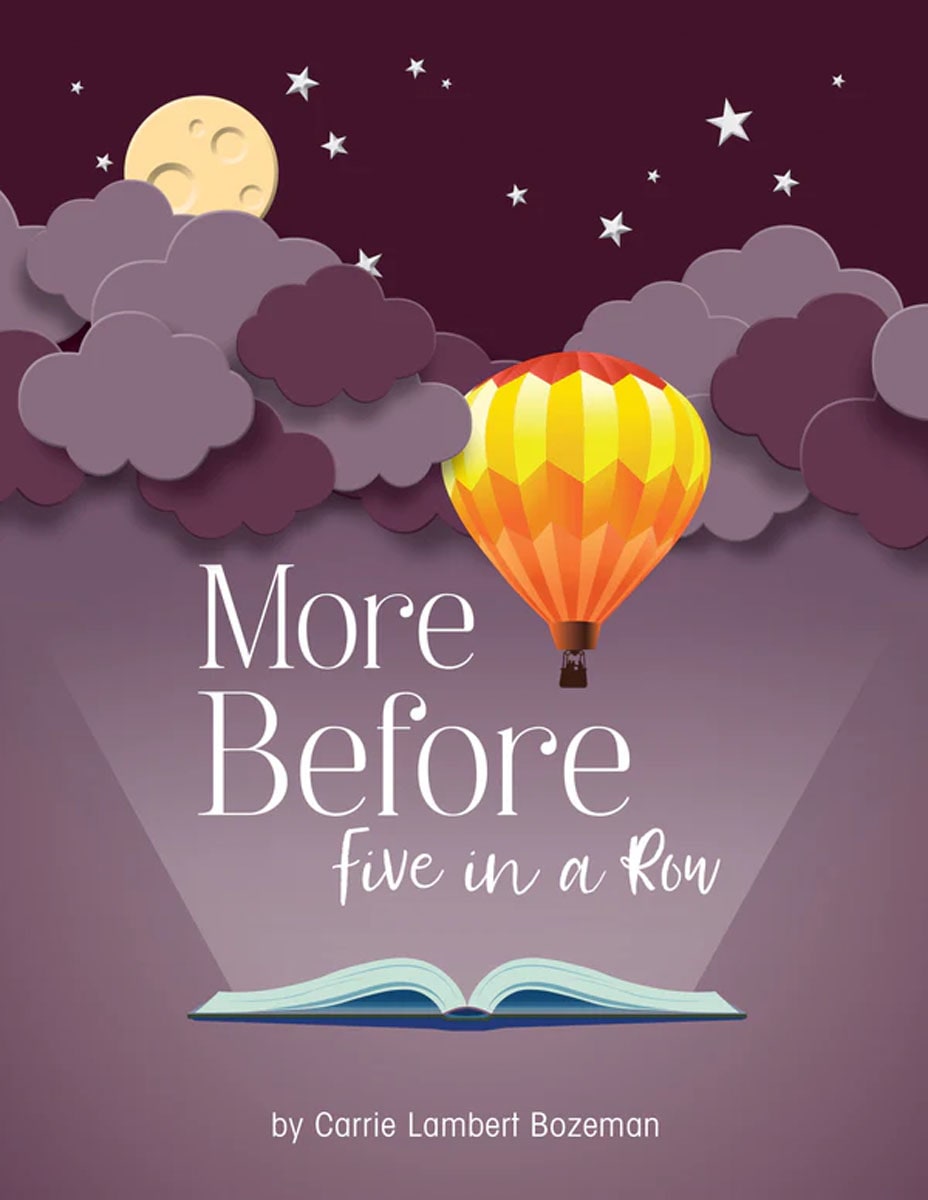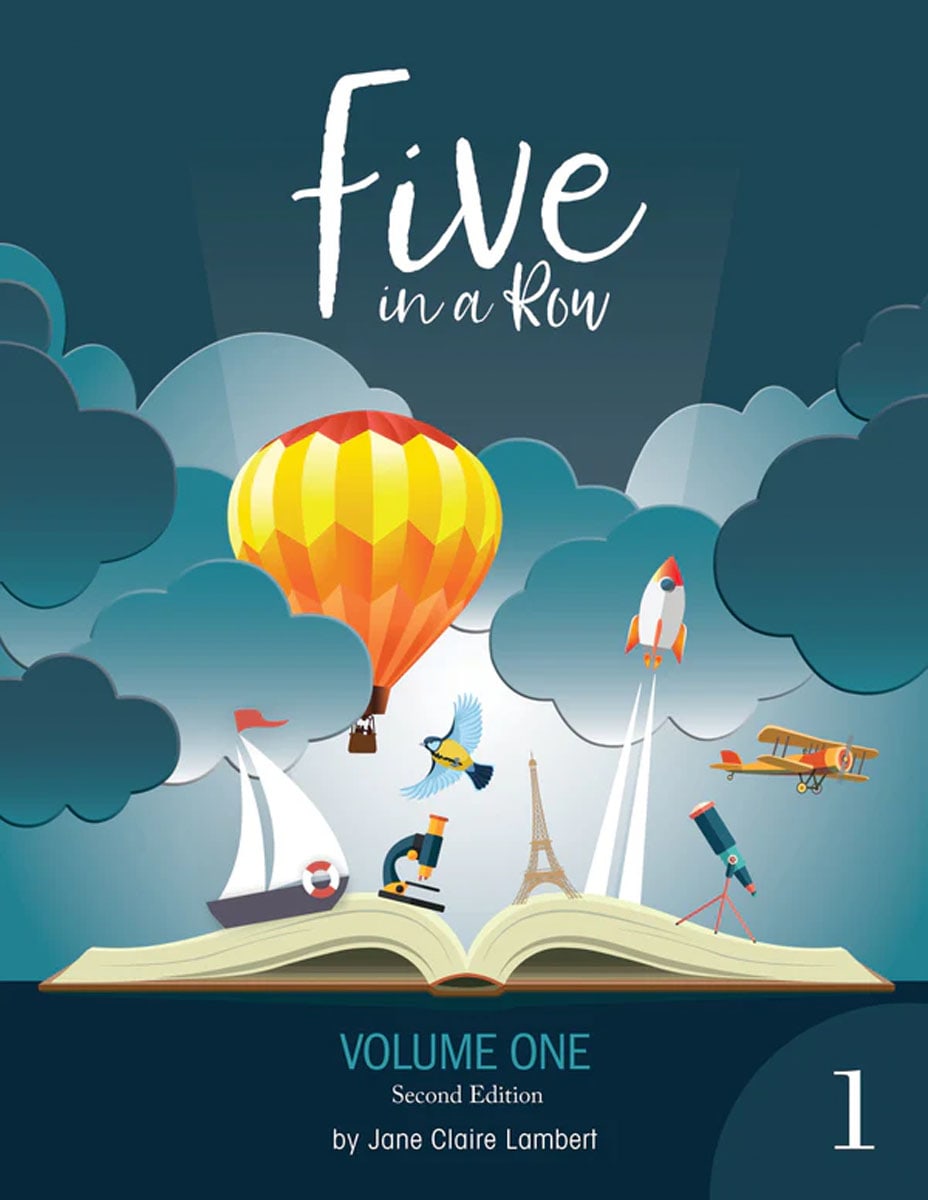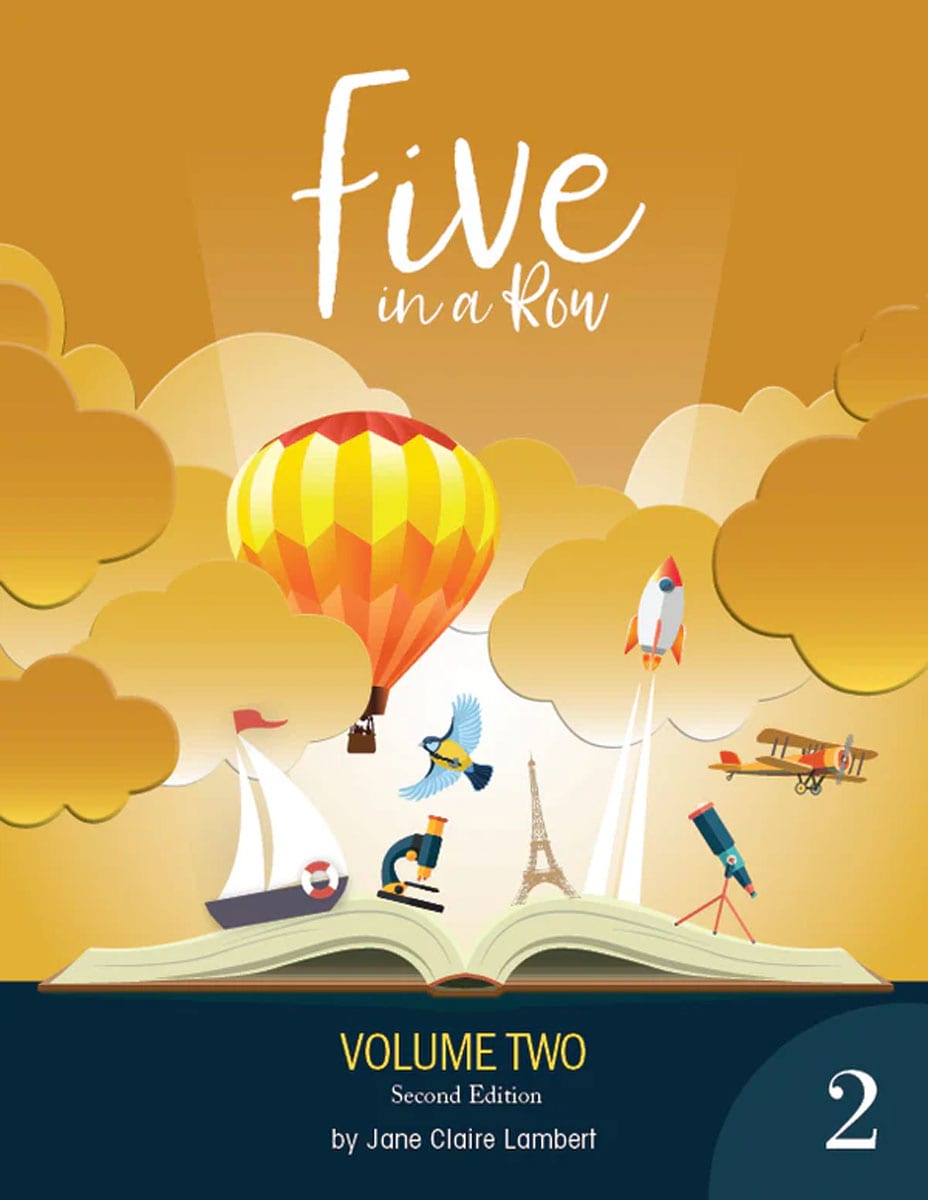Five in a Row publishes guides that each contain a number of (mostly) week-long unit studies based on children's books. You will need to purchase or borrow the required books for each. Before Five in a Row (BFIAR), for ages two to four, and More Before Five in a Row (MBFIAR), for ages three to five, both include Christian content. Then there are six Five in a Row guides for use with ages five through twelve that do not have specifically Christian content. MBFIAR is a new addition to the series, and the second editions (published in 2020) of all of the other guides have a fresh new look and expanded content. There is also the Beyond Five in a Row series for ages nine to twelve.
The name Five in a Row reflects a key feature of most of these guides. Each selected children's book is to be read in its entirety each day for five days in a row. The guides present activities (academic, developmental, experiential, and social) that are related to the story in some way. The activities emphasize different aspects of the story each day, so the repeated reading of the story is important. Parents can choose among the activities to a certain extent, especially with children in preschool and kindergarten. (Note that BFIAR is more casual in its approach, and it doesn't specify reading the storybook every day.)
The overall approach is gentle and relational rather than heavily academic. However, these courses do become increasingly academic as they progress. The publisher's intent is that families work through these guides sequentially. Both the selected storybooks and their companion activities gradually become more challenging as students mature. The only exception is that the Five in a Row Volumes 1 through 3 are all written at the same level of difficulty.
The activities in the lessons address the needs of children with different learning styles. They should be especially good for active, hands-on learners and for children who thrive on personal discussion and interaction.
You don't need to use all of the guides, but I think that BFIAR and MBFIAR are best used together, as I will explain in their section below.
None of the Five in a Row guides are open-and-go resources. Parents need to read through the lessons, select activities, and gather resources in advance. Generally, you will use standard arts and crafts supplies and household items you probably have on hand, but you will occasionally need to gather or buy items. Many of the lessons recommend “go-along” books that match up with lesson topics, but these are optional.
In summary, the Five in a Row guides should be great for those who want a more relaxed and relational unit-study approach to learning. Following are details about the different guides.
Note: Rainbow Resource Center sells literature packs for the Five in a Row guides, and Purple House Press publishes 13 of the books used in Five in a Row.
Before Five in a Row and More Before Five in a Row
Before Five in a Row (BFIAR) is a guide for ages two through four that uses 24 children's picture books. More Before Five in a Row (MBFIAR) uses 14 picture books. Both the picture books and activities in MBFIAR are at a slightly higher level of difficulty that is suitable for ages three through five.
The BFIAR and MBFIAR guides can serve as your complete curriculum. Between the two guides, there are a total of 38 lessons, each of which should take a week to complete. You can use both guides at a relaxed pace over a two-year span, or you could complete both guides in a little more than a year if you use one lesson per week.
Both of these guides include activities for Bible, art, music, science, health, language arts, social studies, and math, along with other activities under headings such as emotions, relationships, and drama. The activities are tailored to each story, so they vary from week to week.
Each week's lesson begins with details about the selected storybook and a brief summary. A Bible connection is the first activity for each lesson. In BFIAR, the Bible activities usually refer to passages in the Bible, but they frequently offer little more than a mention of how particular verses or passages might relate to the lesson topic. MBFIAR expands the Bible activities with comments to the parent and specific activities, sometimes even including lesson material you can read directly to your child.
After that, the activities don't follow a set pattern. For instance, the first three activities for the study of The ABC Bunny in BFIAR are science-related—about plant life, weather, and animal classification. Next are two art observation activities, a counting activity, an introduction to the letters of the alphabet, a rhyming activity, and a music activity. Instructions for some activities are vague, so it's often up to you to determine exactly what to do and how much time to spend.
While the BFIAR guide has about four pages for each picture book, MBFIAR generally has six or more pages for each picture book with more activities and more-detailed instructions. For example, for the study of the book Go to Sleep, Little Farm in MBFIAR, there are five science activities about bees, shadows, beavers, fireflies, and baby animals. These are followed by two observational art activities and one hands-on project. Next is a suggestion for pretend play. Finally, there are six topics for language arts that include informal teaching strategies, rhyming activities, a search-and-find pre-reading activity, age-appropriate activities about onomatopoeias and personification, and a few paragraphs about the value of reading bedtime stories with children. Lessons for other books delve into other subject areas. For instance, Little Bear's Little Boat gets into recycling, transportation, and other social studies and science topics.
In MBFIAR, language arts and math activities are slightly more academic, such as learning to count to 10 and identifying words with the same beginning sounds. However, these types of activities are infrequent and do not count as systematic instruction for math or reading.
Both of these guides have pages at the back with cards you will need to copy and cut out for animal classification games. The cards have detailed, black-line drawings of creatures that are mentioned in the stories (i.e., animals, birds, insects, etc.). Instructions for the games are in the lessons.
Each guide has its own storybook map and "story disks." For each story, a paper story disk has an illustration of the key character or another identifying feature. The storybook map is a two-page-wide, fanciful landscape that includes locations that can be identified for each story in that particular guide. At the end of each week's lesson, the child is to put the story disk on the proper place on the storybook map. (Removable mounting putty works great for this.) Black-and-white pages with the story disks and the storybook map are at the back of each guide. However, each guide that is purchased directly from the publisher also comes with a laminated page of full-color story disks. You can also purchase laminated, full-color storybook maps if you wish. Using the disks and map isn't required, but it's a fun, visual reminder of the stories the children have heard, and the map also gives children opportunities to make connections from the stories to identify the likely locations for each disk.
Before Five in a Row includes more than 40 pages near the back of the guide under the heading "Parent's Treasury of Creative Ideas for Learning Readiness." This is a treasure trove of informal learning suggestions that include games, songs, play experiences, motor-skill activities, art activities, field-trip suggestions, bath-time activities, and much more. This part of the guide is not repeated in More Before Five in a Row, but it seems to me that these ideas should still be used alongside the lessons in both guides. Consequently, starting with BFIAR and continuing with MBFIAR makes the most sense.
Five in a Row: Volumes 1, 2 and 3
Five in a Row: Volumes 1, 2, and 3 were written for ages five through nine. They can be used in any order since lessons do not build upon one another and this will not be your complete curriculum. Volume 1 uses 19 children's picture books. Volume 2 uses 20, and Volume 3 uses 16. You can spread the lessons from one volume out over more than one year, or you can use more than one volume in one year. It's up to you.
If you want to use Five in a Row (FIAR) with children in kindergarten or first grade, you will need to add programs for phonics and math. Once children can read, you might also add resources that teach handwriting, spelling, and grammar. Up through second grade, the learning activities for social studies, science, and art are likely to be much better in Five in a Row than those in traditional textbooks. With third and fourth graders, you might want to use something more structured for social studies and science.
As with the guides for younger children, the study of each picture book should take one week. More or less time can be spent each day depending upon which lesson elements you choose to use. (These guides all have suggested schedules at the back.)
Parents continue to read the books aloud to their children, even when children have learned to read independently. As children get older, they might be less willing to listen to the story five days in a row. The guides offer suggestions that will help you engage students if this problem arises, suggestions such as watching for a particular visual or story element that will be discussed after the reading.
While there are no biblical references in these volumes, FIAR teaches positive character qualities such as forgiveness, compassion, and honesty. Likewise, the selected stories are not overtly Christian but still reflect biblical principles. For those who want explicit Christian connections, a separate Five in a Row: Bible Supplement for Volumes 1 - 4 contains Bible-based lessons that correlate with all of the picture books read in those volumes.
Examples of just some of the storybooks used with these three volumes are The Story About Ping, Mike Mulligan and His Steam Shovel, Katy and the Big Snow, Wee Gillis, Make Way for Ducklings, The Salamander Room, All Those Secrets of the World, and Gramma’s Walk.
The lessons in these three guides are all based on the picture books and have activities for language arts, math, science, art, and social studies. The term social studies is used loosely to cover character qualities and relationships in addition to geography, history, and cultures. There are numerous hands-on activities, projects, and reproducible worksheets, but the detailed lesson plans more frequently are presented as “talk about this” activities. Instructional information or general topics to address are included in the lessons. In addition, every lesson has one or more student pages for coloring, drawings, completing a graphic organizer, or writing.
Like the lower-level guides, each FIAR guide has a page of black-and-white story disks at the back, and a laminated page of full-color story disks comes free with books purchased directly from the publisher. You can also purchase the laminated page of story disks for each guide separately. Story disks—one for each story—have an illustration of the key character or another identifying feature for each story. Children can affix the story disks to laminated U.S. and world maps (purchased elsewhere) with removable mounting putty.
The suggested schedule at the back of each guide has you use activities for only one subject area per day, but you could instead select a variety of activities from among the subject areas. You are free to arrange them however you wish. Activities range from those appropriate for non-writers and non-readers to those for children who have mastered these skills. The variety of activities gives you sufficient choices to meet the academic needs of children from kindergarten up through about fourth grade.
You are encouraged to use the stories in whatever order you please. The index at the end of each guide lists what is covered under each subject area and sometimes breaks it down further under subheadings.
Teaching instructions that apply to most lessons are at the beginning of each guide. Within each lesson, there are detailed instructions for each activity. Parts of the lessons are written in such a way that they can be read directly to your child. (This will save time for parents.) Each lesson includes a Teacher's Notes page that you can use for lesson planning and writing your own notes about resources and field trips.
Five In A Row: Volume 4, 5, and 6
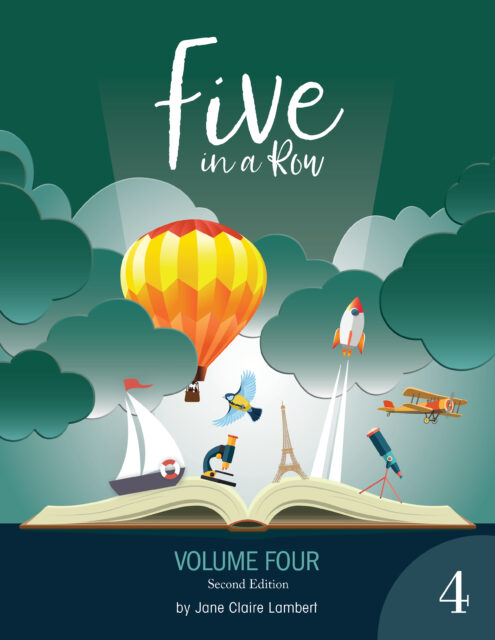 Volumes 4 and 5 are formatted in the same way as the first three volumes, but they are both written for slightly older audiences, with increasing difficulty in each guide. Volume 6 (available in June 2022) and Volumes 7 and 8 (in development) will continue this gradual increase in difficulty. This progression allows students to continue learning using the FIAR approach in a manner suitable for older students.
Volumes 4 and 5 are formatted in the same way as the first three volumes, but they are both written for slightly older audiences, with increasing difficulty in each guide. Volume 6 (available in June 2022) and Volumes 7 and 8 (in development) will continue this gradual increase in difficulty. This progression allows students to continue learning using the FIAR approach in a manner suitable for older students.
Parents are generally more concerned about how FIAR fits with the rest of their curriculum as students hit fourth and fifth grade. For the fourth and fifth volumes, FIAR should provide complete coverage for literature, vocabulary, and reading skills as long as students do plenty of both independent reading and reading aloud. Composition skills are taught frequently but not in a sequential fashion. You might want separate resources for grammar, spelling, or handwriting. There should be plenty of art activities for both art appreciation and hands-on work. Science and social studies are covered fairly extensively if you use most of the activities for those areas, but you might want to use more-thorough resources for both areas. (A study of United States History would fit well alongside either guide because of the topics addressed in the books.) Keep in mind that the coverage of different subject areas varies depending upon the content of each story, and you can expand the study of topics that arise within the Five in a Row lessons using internet resources and books from the library.
Volume 4 continues the FIAR series with lessons for children ages nine and ten. The selected children's picture books are all 32 pages long, except Grass Sandals, which has 40 pages. Even though these are picture books, the content of the stories gets into events and concepts that provide more advanced opportunities for discussion and learning in the areas of language arts, social studies, science, and applied math. For instance, the study of Roxaboxen suggests having a discussion about the purpose of local government, the role of a mayor, local laws, and jail as a deterrent. Clearly, these are concepts that start to become interesting to children who are a little older than the audience for the first three FIAR volumes. Activities across the board for other subject areas are at a higher level. For instance, a vocabulary activity on page 52 has students complete a chart by filling in the meanings of Greek and Latin word roots and then finding words that are built on those roots.
Each picture book is used for a two-week study rather than one week. The FIAR guide has questions, discussion guides, and hands-on activities as well as activity sheets and suggestions for additional study. Fewer picture books are covered in this volume, but there are more suggested activities, and those activities will often take longer to complete.
The picture books used in the study are Roxaboxen by Alice McLerran, The Tree Lady by H. Joseph Hopkins, The Pumpkin Runner by Marsha Diane Arnold, Hanna’s Cold Winter by Trish Marx, Albert by Donna Jo Napoli. Mailing May by Michael O. Tunnell, Cowboy Charlie by Jeanette Winter, and Grass Sandals by Dawnine Spivak. Volume 4 also has bonus studies for three more picture books, but those books are out of print and might be difficult to find.
Volume 5 was written for ages ten through twelve, with books and content more challenging than in Volume 4. Most significantly, there are studies for four children's picture books that should each take about two weeks, plus two studies of chapter books that might each take from four to nine weeks to complete. The picture books used are The Raft by Jim LaMarche, Snowflake Bentley by Jacqueline Briggs Martin, The Gullywasher by Joyce Rossi, and Minette's Feast by Susanna Reich.
The two chapter books are The Boxcar Children by Gertrude Chandler Warner and Betsy Ross: Designer of Our Flag by Ann Weil. The lessons for these two books include much more information than is provided for the picture books in the previous guides. For example, there are explanations about Benjamin Franklin, Philadelphia, Quaker beliefs, and the Quaker lifestyle that are all part of the story in Betsy Ross: Designer of Our Flag. Some assignments for these books require students to do research. The lessons for chapter books also include activities on life skills and potential career paths. Art activities expand into both visual and performing arts, architecture, and other areas. A “Writing and Discussion Question” for each chapter allows you to choose which way to have a student respond: in writing or with a discussion.
A section titled Bonus Unit Studies has complete studies for four more picture books. Some of these are out of print, but they should be easier to find than the books for the bonus studies in Volume 4. They are well worth doing.
Volume 6 (available in June 2022) includes only chapter books.
Beyond Five in a Row
The Beyond Five in A Row guides were originally written to follow after the first three FIAR volumes, but they are very different. They don't require re-reading the books. These guides are gradually being rewritten under the Five in a Row title so that students can continue the series smoothly after Volume 5. Two of the books studied in the first volume of Beyond Five in a Row have already been incorporated into Volume 5. Meanwhile, the Beyond Five in a Row guides for grades three through eight remain available while we await the publication of Volume 6 and above.
These three guides were authored by Becky Jane Lambert, daughter of the original series author, Jane Claire Lambert. They make excellent, one-semester unit-study-style courses that cover literature, vocabulary, composition, history, science, and fine arts. The emphasis on different subject areas depends upon the content of the story. Quite a bit of historical and scientific information is included within each Beyond Five in a Row guide, but you need to use outside resources for additional research. Many such resources are suggested in the lessons. Creating timelines is recommended as a means of helping students understand chronological relationships between people and events. Lessons for all subject areas often include internet activities where students conduct research on topics related to the studies. A list of all topics covered is located at the back of each guide. This will help you both plan and track student accomplishments.
Lessons are set up so that you read a chapter from the book, then work through your choice of the suggested activities. These activities vary greatly from day to day. About half of the lessons include an essay question; you will need to tailor the requirements for these to suit the age of each student. Numerous hands-on activities are included: art projects, cooking, science experiments, learning sign language, etc. Occasional "Career Paths" sections help students consider career possibilities and offer suggestions for further research or experience in the field.
The four chapter books used with Beyond Five in a Row: Volume 1 are The Boxcar Children, Thomas Edison: Young Inventor, Homer Price, and Betsy Ross: Designer of Our Flag. Volume 2 uses Helen Keller; The Story of George Washington Carver; Sarah, Plain and Tall; and Skylark. Volume 3 uses a chapter book that has gone out of print, so I would recommend waiting until the studies in that volume are updated.




